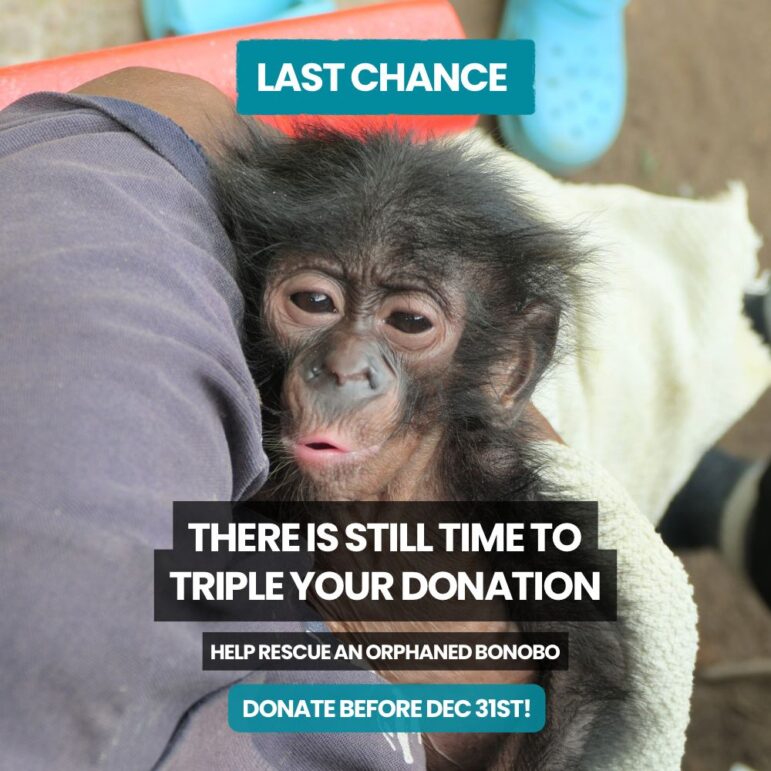Humans have a lot in common with bonobos
By Jeannette De Wyze
How are bonobos and humans alike? Let’s count some of the ways.
1. Genetics

Perhaps the best-known bond lies deep within our cells, in the genetic instructions that make us what we are. For the last 10 years, it’s been known that humans share 98.7% of their genome with both bonobos and chimpanzees.
We have no closer genetic relatives than the members of those two species. There’s growing evidence, moreover, that in other key ways, humans and bonobos resemble each other most of all.
2. The ‘Peter Pan’ Ape
For one thing, both humans and bonobos are markedly neotenous, that is, we retain many juvenile features when we’re full grown. Human skin remains (more or less) naked. Adult human faces stay relatively flat, our heads remain large, our arms relatively short. For the most part, “we also retain the playfulness and curiosity of juveniles,” says renowned primatologist Frans de Waal. “We play, dance, and sing until we die, and we keep exploring new knowledge….” Neoteny has been called humanity’s hallmark, writes de Waal in his 2022 book Different. Gender through the Eyes of a Primatologist. (Norton 2022: 110-111).

“Bonobos have sipped from the same youth potion,” the primatologist continues. All their lives, bonobo voices remain high-pitched. Members of pan paniscus don’t develop the prominent eyebrow ridges seen in other adult ape faces. They keep the white tail tufts lost by chimps by the time they’re weaned. And like humans, both male and female bonobos remain remarkably playful throughout their lives. They have even been dubbed “The Peter Pan ape.” “It is not uncommon to see bonobo females frolicking around, tickling and chasing each other with hoarse laughing sounds,” writes de Waal.
3. Anatomy

Like human females, adult female bonobos have a frontally oriented vulva equipped with a prominent clitoris, an anatomical arrangement that enhances the pleasure of face-to-face copulation. That position (and anatomy) is almost unknown among other primates, including chimpanzees, who mate front-to-back (“doggy-style”). In fact, for many years, face-to-face positioning during sex was believed to be an exclusively human activity. Bonobos, however, engage in it routinely.
Recent research into the muscle structure of bonobos also indicates that humans are more closely related to bonobos than chimpanzees. This insight developed when a research team dissected seven bonobo cadavers retained by the Antwerp Zoo (which has one of the largest groups of bonobos in captivity). The researchers then compared the differences between bonobos, common chimpanzees, and modern humans, along with other apes and primates. They found only 13 major differences between the musculature of bonobos and modern humans, compared to 20 major differences between the muscles of modern humans and common chimpanzees.

In the 8 million years since the human and chimpanzee/ bonobo lineages diverged, “Bonobo muscles have changed least,” said Bernard Wood, a professor of human origins at George Washington University and one of the study co-authors. This suggests bonobos “are the closest we can get to having a ‘living’ ancestor.”
4. Socially Savvy
Other recent research sheds light on an important behavior shared by humans and bonobos in addition to youthful play.
Joint commitment is a sociological concept that goes beyond mere cooperation to include talking and behaving in ways that make such cooperation easier. Humans typically don’t disengage from shared activities without signaling their partner(s) in that activity. On a phone call, for example, we don’t just abruptly hang up. We use some stock phrase to wrap up the conversation. Or if we’re interrupted from a joint activity, we apologize or promise to return to it.

Up to now, there was no evidence that any animals act like humans when they engage in actions together. However, a study published in December 2020 in Science Advances provides evidence that bonobos do, to some extent.
The researchers systematically interrupted bonobos engaged in various activities at La Vallee des Singes, an animal park in western France. They found bonobos who had been engaged in social activities returned to the activity after being interrupted more often than those distracted from solitary activity. The patterns of communication at the time of the interruptions also “suggest that bonobos have some awareness of the social consequences linked to breaking joint commitments,” according to lead researcher Raphaela Heesen.
Help Save Bonobos from Extinction
Studies conducted so far have shown many similarities between humans and our closest kin in the animal kingdom – bonobos. More research is needed to understand these amazing great apes who live only in the Democratic Republic of Congo.
But they are threatened with extinction. You can join us to help save bonobos and their rainforest habitat!
Learn more about bonobos when you sign up for our bonobo video series!

Jeannette De Wyze was a journalist at the San Diego Reader for 30 years. Today she’s a bonobo lover and supporter as well as the volunteer liaison between Women’s Empowerment International and the Nyaka Grannies Project in Uganda. She also raises puppies to be service dogs for Canine Companions for Independence and is an active blogger.



